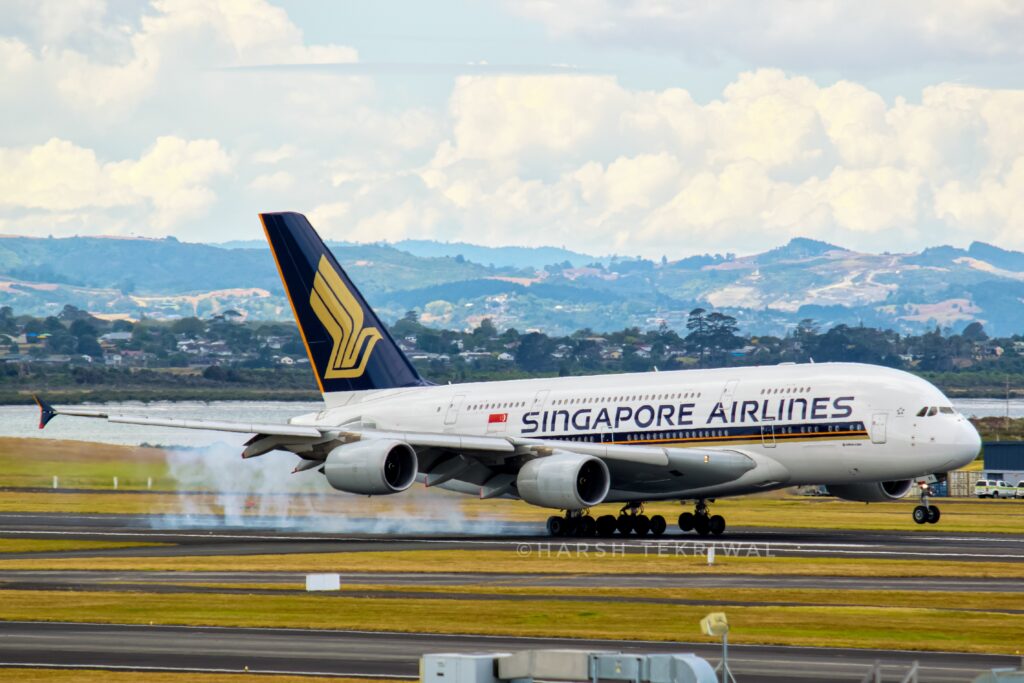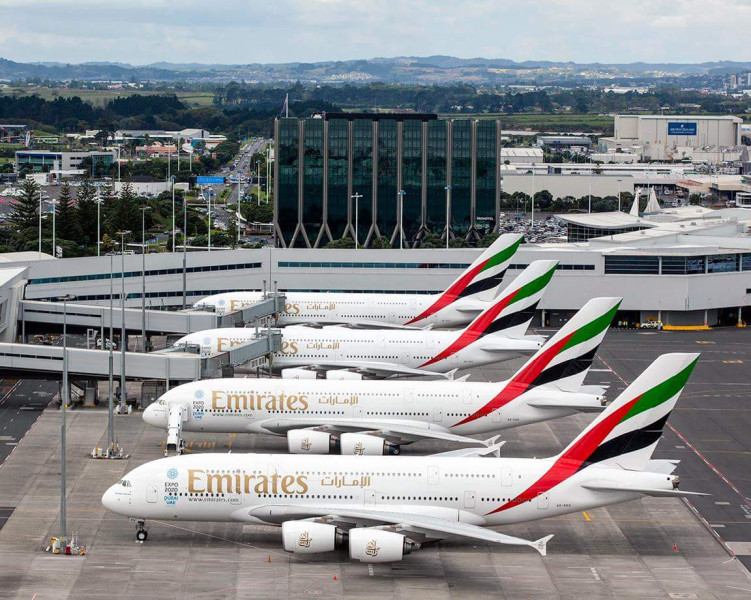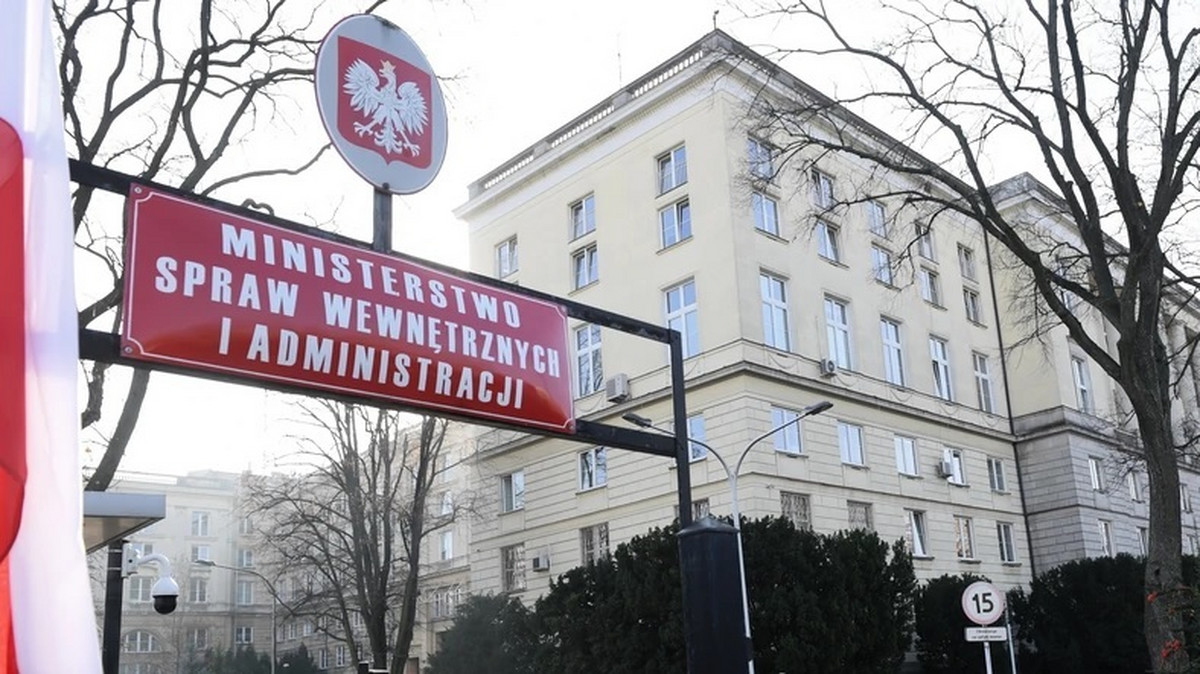
The Airbus A380 remains the largest passenger airliner in the world, and in 2025, it is still operated by just 11 airlines globally.
Despite its engineering brilliance, only select carriers continue to deploy it on high-capacity, long-haul routes.
From Emirates (EK) at Dubai International Airport (DXB) to Singapore Airlines (SQ) at Singapore Changi Airport (SIN), the A380 is a symbol of prestige and comfort.
While some airlines have retired the aircraft, it remains a flagship for carriers that can sustain its unique economics.
 Photo: avgeekwithlens/ Harsh Tekriwal
Photo: avgeekwithlens/ Harsh TekriwalTop 10 Airbus A380 Operators
The Airbus A380 was developed as a response to the Boeing 747’s dominance in the long-haul market. Airbus engineers began research in the late 1980s and officially launched the program in 2000.
The result was a four-engine, double-deck airliner capable of carrying over 850 passengers in all economy layouts or around 500 in a three-class configuration.
The first commercial service began in October 2007 when Singapore Airlines (SQ) flew the A380 between Singapore Changi Airport (SIN) and Sydney Kingsford Smith Airport (SYD).
Over time, 251 aircraft were delivered, with Emirates (EK) becoming the largest operator. However, Airbus discontinued production in 2021 due to limited demand, high costs, and the industry’s shift toward smaller, fuel-efficient twinjets like the Boeing 787 and Airbus A350.
Today, 189 A380s remain in active service. The following are the Airbus A380 operators in 2025:
| 1. | Emirates | 116 total (21 parked) | Dubai International Airport (DXB) | Largest operator, 110+ A380s in service |
| 2. | Singapore Airlines | 12 (3 parked) | Singapore Changi Airport (SIN) | Launch customer, operating 9 A380s |
| 3. | British Airways | 12 total (assumed active) | London Heathrow Airport (LHR) | Active A380 fleet for long-haul and transatlantic |
| 4. | Qantas | 8 active (10 total, 2 stored) | Sydney Kingsford Smith Airport (SYD) | Strong A380 presence |
| 5. | Etihad Airways | 9 total | Abu Dhabi International Airport (AUH) | Recently reactivated A380s |
| 5. | Lufthansa | 8 total | Frankfurt Airport (FRA) | Reintroduced A380 fleet in 2023 |
| 6. | Qatar Airways | 8 total | Hamad International Airport (DOH) | Operating A380s on premium demand routes |
| 8. | Korean Air | 7 total | Incheon International Airport (ICN) | Major Asian A380 operator |
| 9. | Asiana Airlines | 6 total | Incheon International Airport (ICN) | Operating A380s alongside Korean Air |
| 10. | All Nippon Airways | 3 total | Tokyo Narita International Airport (NRT) | Reintroduced the A380 fleet in 2023 |
Former operators include Air France (AF), China Southern Airlines (CZ), Malaysia Airlines (MH), Thai Airways (TG), and Hi Fly Malta (5K), all of which phased out the type by 2022.
 Photo: MCO Airport
Photo: MCO AirportA380’s Technical Marvels
The Airbus A380 is an aircraft designed for scale and comfort. Key specifications include:
- Length: 239 feet
- Height: 79 feet
- Wingspan: 261.8 feet
- Maximum Takeoff Weight (MTOW): 1.26 million pounds
- Range: 7,991 nautical miles (9,195 miles)
- Service Ceiling: 43,100 feet
- Typical Cruise Speed: 488 knots (561 mph)
It is powered by either Rolls-Royce Trent 900 engines or Engine Alliance GP7270s, both providing around 75,000 pounds of thrust.
Its composite-enhanced structure, advanced wing design, and quiet cabin made it a passenger favorite.
According to Simple Flying, many travelers still regard the A380 as the most comfortable aircraft in commercial service.
 Photo: By Vismay Bhadra – Own work, CC BY-SA 4.0, https://commons.wikimedia.org/w/index.php?curid=73465840
Photo: By Vismay Bhadra – Own work, CC BY-SA 4.0, https://commons.wikimedia.org/w/index.php?curid=73465840Market Shifts
Despite its strengths, the A380 faced challenges that limited its long-term adoption. Its large size required significant airport infrastructure upgrades, including wider taxiways, dual jet bridges, and reinforced runways.
Operating costs were high due to the engine maintenance and fuel consumption. Meanwhile, the industry trend shifted toward smaller, more flexible widebodies.
Aircraft like the Boeing 787 Dreamliner, Boeing 777-300ER, and Airbus A350 allowed airlines to fly long-haul routes directly between smaller cities instead of relying solely on hub-to-hub connections. These aircraft offered lower costs, higher efficiency, and more network versatility.
Airlines without consistently high passenger demand struggled to profitably deploy the A380, leading to retirements across Asia and Europe.
Emirates remains the only airline to have fully embraced the A380 business model, tailoring its network and cabin experience around the aircraft’s unique capabilities.
 Photo: Emirates
Photo: EmiratesWhy Only 11 Airlines Operate the A380
As of 2025, just 11 airlines continue to fly the A380 due to a mix of economic, strategic, and market reasons.
Airlines like Emirates and Singapore Airlines benefit from high-capacity hubs where the A380 thrives, while others like British Airways and Qantas use it on dense, premium-heavy routes where demand justifies its size.
Carriers such as Air France and Malaysia Airlines, however, found the aircraft too inflexible. Operating smaller widebodies allowed them to increase frequency, serve more destinations, and reduce risk.
For airlines unable to guarantee consistently full cabins, the A380 was an expensive liability.
Nonetheless, for travelers, the A380 remains unmatched in comfort and onboard space. Its quiet cabins, wider seats, and luxury configurations, including onboard lounges and showers on Emirates, set it apart from all other aircraft in service.
 Photo: By Mitchul Hope – Etihad Airways | A6-APB | Airbus A380-861 | London Heathrow Airport (LHR/EGLL), CC BY-SA 2.0, https://commons.wikimedia.org/w/index.php?curid=129305775
Photo: By Mitchul Hope – Etihad Airways | A6-APB | Airbus A380-861 | London Heathrow Airport (LHR/EGLL), CC BY-SA 2.0, https://commons.wikimedia.org/w/index.php?curid=129305775Legacy of A380
The Airbus A380 may not have achieved the commercial success Airbus initially envisioned, but it has left an indelible mark on aviation history.
It proved the possibility of ultra-large passenger aircraft, redefined passenger experience standards, and became a flagship for the world’s most prestigious airlines.
Even though no new A380s will be built, the aircraft will remain in service for at least another decade.
Among Airbus A380 operators, Emirates plans to fly the type well into the 2030s, and other carriers like ANA and British Airways are committed to keeping it operational on selected routes.
For aviation enthusiasts, the A380 is not just a mode of transport; it is a symbol of a unique era in commercial aviation that combined ambition, innovation, and luxury at an unprecedented scale.
Stay tuned with us. Further, follow us on social media for the latest updates.
Join us on Telegram Group for the Latest Aviation Updates. Subsequently, follow us on Google News
The post Top 10 Airlines Flying Airbus A380 in the World in 2025 appeared first on Aviation A2Z.

















